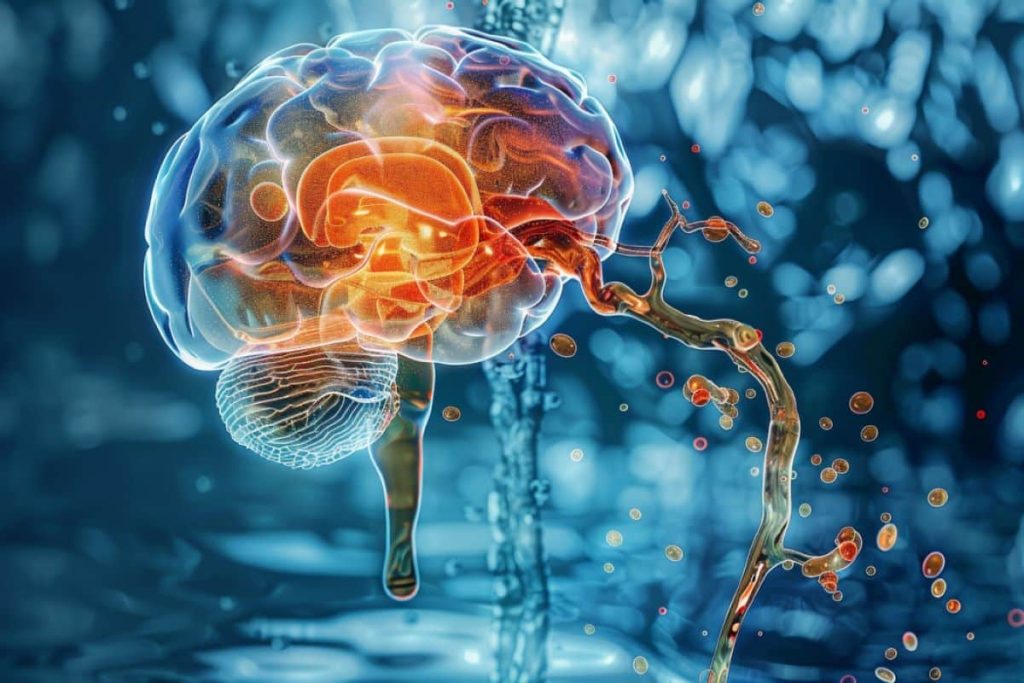summary: A new study sheds light on the cerebellum’s role in regulating thirst, expanding its known functions beyond motor control: Researchers found that the hormone asprosin activates Purkinje cells in the cerebellum, driving the urge to drink water.
The findings could lead to new treatments for thirst disorders. The study highlights the broad influence of the cerebellum on important survival functions.
Key Facts:
- Thirst Control: The cerebellum regulates thirst via asprosin-activated Purkinje cells.
- Non-motor functions: This extends the known role of the cerebellum beyond motor control.
- Treatment possibilities: This discovery may lead to treatments for thirst disorders such as polydipsia and hypodipsia.
sauce: University Hospital
The cerebellum, also known as the “little brain,” is one of the most ancient brain regions from an evolutionary perspective and has fascinated researchers for centuries due to its unique structure and cellular complexity.
Although it has traditionally been thought of solely as a motor control center, recent research has revealed that it is also involved in non-motor functions such as cognition, emotion, memory, autonomic function, satiety, and meal completion.
Recent mouse model studies have shown that Nature NeuroscienceResearchers from University Hospitals (UH), the Harrington Discovery Institute at UH and Case Western Reserve University have discovered that the cerebellum also controls a key function essential for survival: thirst.
Specifically, the team found that a hormone called asprosin enters the brain from the periphery and activates Purkinje cells in the cerebellum, which increases the urge to seek and drink water.
“Asprosin, a hormone that our lab discovered in 2016, is known to stimulate food intake and maintain weight by activating key ‘hunger’ neurons in a part of the brain called the hypothalamus, and it works by binding to proteins called ‘receptors’ on the surface of neurons,” explained Atul Chopra, MD, lead author of the study, an investigator at the Harrington Discovery Institute at UH, deputy director of the Harrington Rare Disease Program, chief medical geneticist at UH, and associate professor of medicine, genetics and genomics at Case Western Reserve School of Medicine.
A hormone needs a receptor to function, and in the case of asprosin, which controls appetite and body weight, that receptor is Ptprd. The research team discovered that Ptprd is highly expressed not only in the hypothalamus but also in the cerebellum, but its functional significance was unknown.
“We initially thought that asprosin’s action in the cerebellum might be to regulate the hypothalamus and food intake, but that turned out to be incorrect. The breakthrough came when Ira Mishra, a postdoctoral researcher in our lab who now heads his own lab at the University of Kentucky, discovered that mice bred to lack the cerebellar response to asprosin had reduced water intake.
“This was an incidental observation because our intended endpoint was to measure food intake, not fluid intake.”
These mice also had reduced Purkinje cell activity and showed hypodipsia (a reduced sensation of thirst). Food intake, motor coordination, and learning were unaffected. In contrast, mice generated to block the hypothalamic response to asprosin showed reduced food intake without affecting thirst.
“Our findings identify not only a novel function for cerebellar Purkinje cells in thirst regulation but also an independent regulation from their established roles in motor coordination and learning,” Dr Chopra added.
“It’s fascinating that more than a century after the beginning of neuroscience, we continue to discover major new functions in parts of the brain that have long been thought to be mysterious. The broader implication of this discovery is that it could help manage thirst disorders such as polydipsia (excessive thirst), hypodipsia and anidipsia, for which there are currently no treatments.”
About this thirst and neuroscience research news
author: George Stamatis
sauce: University Hospital
contact: George Stamatis – University Hospital
image: Image courtesy of Neuroscience News
Original Research: The access is closed.
“The cerebellum regulates thirstAtul Chopra et al. Nature Neuroscience
Abstract
The cerebellum regulates thirst
The cerebellum is a phylogenetically ancient brain region that has long been considered a strictly motor control structure. Recent studies have implicated the cerebellum in cognitive, sensory, emotional and autonomic functions, making it an important subject of further investigation.
Here we show that activation of mouse cerebellar Purkinje cells by the hormone asprosin enhances thirst and that optogenetic or chemogenetic activation of Purkinje cells rapidly induces drinking behavior.
Deletion of the Purkinje neuron-specific asprosin receptor (Ptprd) reduces water intake without affecting food intake and abolishes the polydipsia effect of asprosin.
Purkinje cell-mediated motor learning and coordination were unaffected by these manipulations, indicating independent control of two distinct functions by Purkinje cells.
Our findings indicate that the cerebellum is a brain region regulating thirst and that asprosin-Ptprd signaling may represent a potential therapeutic target in the management of thirst disorders.


